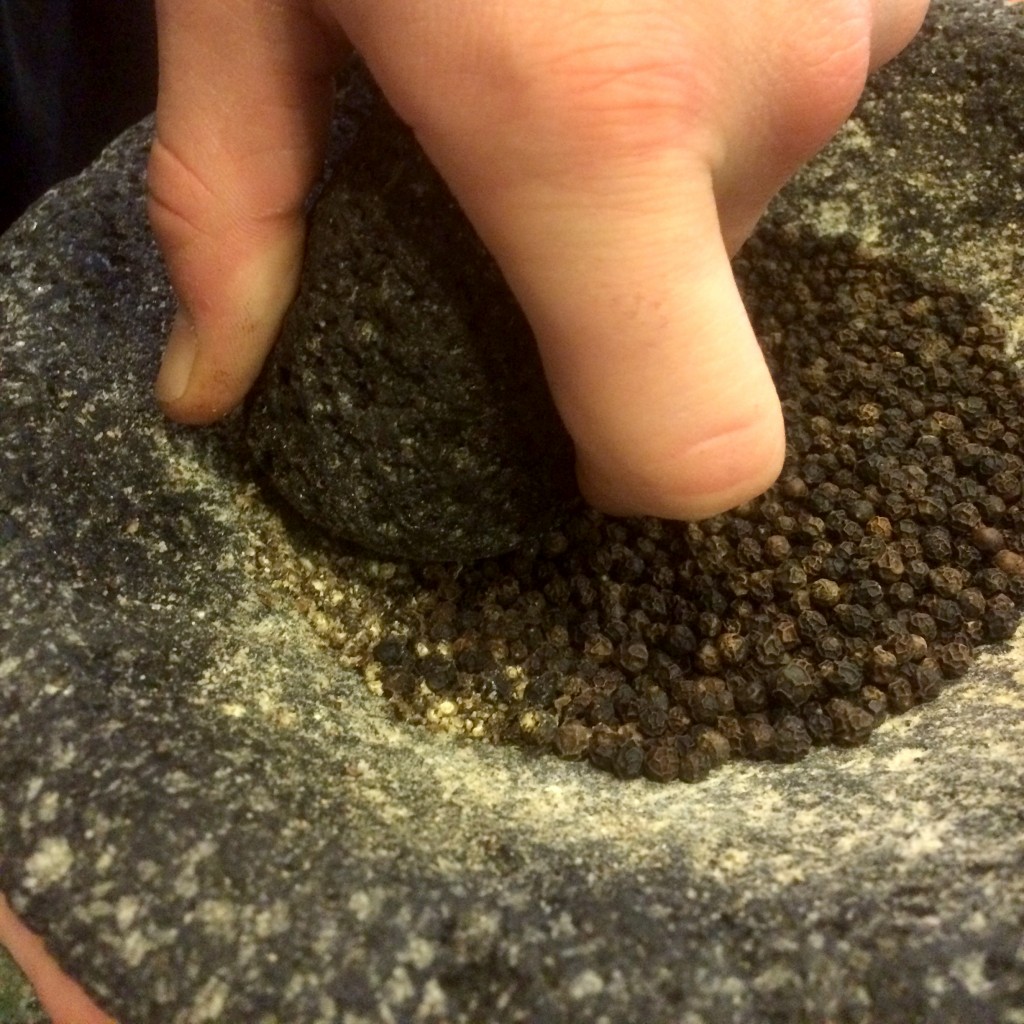It’s a damn good feeling to be back in the Lone Star state. For the past few weeks, I’ve been at home resting up and sampling some good eats. I’ve gotten more than a few dinner requests from the Family and I’m beginning to think they have forgotten that my time in New York was spent in a meat cooler, not a kitchen.
Whatever. I love to get in the kitchen, throw on some jams, and make something special.
Since I’ve been home, I’ve learned to make tamales and I tied and prepared a huge rib roast for the Family Christmas dinner; however I was craving to experiment with things I had learned in New York. Unfortunately, I lacked a commercial kitchen and shiny appliances like I had access to at Fleishers. That meant I was going to have to find my own and on a broke butcher’s budget. After mapping out my meat quest I figured I would need the following:
- a smoker to practice my brisket making,
- a dehydrator to test my new jerky recipes,
- and a curing chamber for some charcuterie experimentation.
My trip to New York wiped out my bank account, but Santa Claus came through with a couple of Benji’s in my stocking. I just had to decide which one of the three pieces of equipment to invest in. I only had enough cash for one. The other two would have to be put on the back-burner. This was my line of thinking until I stumbled on an old, unclaimed smoker.
At first, I wasn’t sure if the ‘ol gal would work. There were rust holes in the bottom, the grill had come detached, and the pipe stack that once rose from the pit had been severed. Her thermometer had definitely seen better days. Its glass cover was shattered and the needle registered a perpetual 185°.
All and all, not insurmountable for an old Boy Scout. A quick trip to Walmart for a freestanding oven thermometer and a few twists of wire to get the grill back on, I had the ‘ol gal back on her feet. Now to give her a test run.
On the actual brisket, I figured I couldn’t go wrong. Chef Jason and I had thrown one in the electric smoker in New York and it turned out awesome – no work and great meat with an amazing bark. Since my smoker didn’t exactly stack up to that commercial one, I would have to keep a careful watch over this brisket the entire time it cooked. The main chamber temperature needed to hover around 225° and stay as smoke-filled as possible.
Pulling an all-nighter would require some help. Luckily, the fridge was stocked with Shiner Bock and my brother was home for Christmas break. He willingly volunteered as soon as I uttered the word “fire.”
We’ve been pyro-maniacs since birth.
The new recruit and I made our way to the local meat market where we commandeered an 15lb. USDA select brisket. Yeah, it wasn’t the 100% grass-fed brisket I was use to working with in New York, but it would do.
After a good thirty minutes of hand-grinding seasonings, I laid down a heavy coat of salt and pepper over the meat.
In the meantime, Sam had started a fire in the smoke chamber and once he had a good bed of coals and the oven thermometer read 225°, we placed the brisket in the main chamber.
Pit masters apply wood chips to create a large amount of smoke without all the heat of a large fire. I applied hickory wood chips every 10-15 minutes throughout the night.
The next morning, the meat thermometer read 190° when I placed it into the center of the brisket. I pulled the brisket from the hand-me-down smoker and let it set.
The ‘ol gal had done good. The bark was thick, dark and glistening. The smoke ring was a lovely ombre red.
After 30 minutes of resting, I sliced and shared.
Sweet victory!
Feedback:
- Aunt Hedy thought it was a bit peppery. It might have been from all the fresh cracked pepper I used.
- Mom thought the meat could have been more tender, but the flavor was spot on.
- Note to self: ALWAYS invest in good meat. If you want a great end product, you have to use great ingredients.







